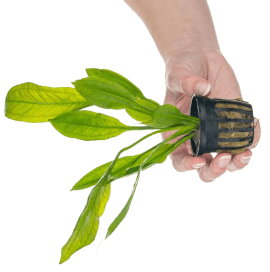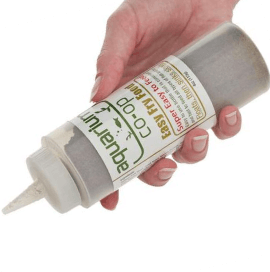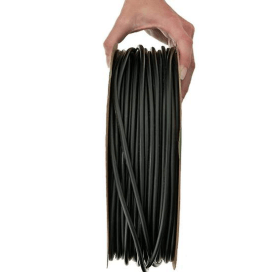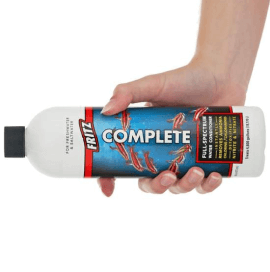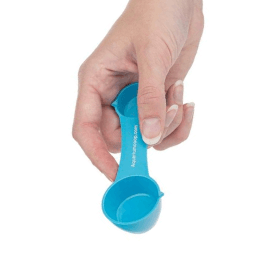How to Set up a Beautiful Betta Fish Tank
Congratulations on getting your new betta fish! Betta splendens is one of the most stunning, beginner-friendly fish out there, so of course he needs to have a beautiful aquarium to match. Check out our recommended shopping list and setup tips to give your new betta the warm welcome he deserves.
Betta Checklist: Everything Your New Fish Needs
Before setting up your betta fish’s new home, let’s go shopping for the necessary components. All of these items can be easily found at your local pet store or online.
#1 Aquarium
A 5-gallon tank is a great starting size for a single betta fish. Many new owners mistakenly believe that betta fish are like houseplants that can live in tiny containers. However, just because a dog can survive its whole life in a kennel doesn’t mean she wouldn’t much prefer to roam around a large house or backyard. A bigger aquarium gives your betta fish the freedom to swim around and explore his environment. Plus, it helps the water stay cleaner for a longer amount of time, which means few water changes for you!

A tiny 0.5-gallon bowl may require daily water changes, whereas a 5-gallon fish tank can usually last one to two weeks.
Betta fish are well-known by the nickname “Siamese fighting fish” because of their aggressive behavior towards their own species. Therefore, all bettas – both male and female – should be housed separately. In fact, betta sororities (or an aquarium with all female bettas) are not recommended except for the most experienced fish keepers. The good news is that betta fish can be kept in a larger community tank with other types of fish, so check out our list of suitable tank mates.
#2 Equipment
Betta fish do like to jump out of the water, so make sure to get an aquarium lid or hood to prevent escape. You also need an aquarium light to best view your handsome boy. Because of their long finnage, bettas have a hard time swimming in strong currents, so choose a small, gentle filter, like a sponge filter or nano hang-on-back filter. Finally, betta fish are tropical fish that enjoy temperatures between 78 to 82°F, so purchase an appropriately sized aquarium heater for your tank.
(Most betta fish aquarium kits are much too small, but if you're feeling overwhelmed by the many equipment options, look for an all-in-one kit that’s 5 gallons or bigger to help simplify the shopping process.)
#3 Decorations
Aquarium decor is a great source of enrichment for your betta fish, so design a look that is both attractive and fun for your pet to explore. Most people like to use gravel or sand to cover the tank bottom, as well as some ornaments or fake plants without any sharp edges. However, consider adding live aquarium plants to make a beautiful nature aquarium. Beginner plants like anubias, java fern, and marimo moss balls are great because they don’t require any special substrate or lighting to grow and they help keep the water cleaner through biological filtration.

Blue male betta fish in a planted aquarium with carpeting plants
#4 Other Supplies
Other than the materials that go inside the tank itself, don’t forget to buy dechlorinator to remove toxic chlorine from the water and a siphon for easily cleaning the aquarium.
Good staple foods include high-quality betta pellets or freeze-dried bloodworms. Finally, invest in an aquarium water test strips so you know when to clean the tank. If the ammonia and nitrite levels get above 0 ppm or nitrate levels are above 40 ppm, it’s time to do a water change.

Aquarium Co-Op Multi-Test Strips
How to Set up a Betta Tank
Now that you have all your supplies, here is a step-by-step guide to assembling your aquarium:
- Pick a good location. The aquarium needs to be near an electrical outline for the equipment and a source of water for easy tank maintenance. To minimize algae growth and temperature fluctuations, avoid areas in direct sunlight or right next to the air conditioner or heating unit. Finally, remember that your aquarium is likely made of glass or acrylic, so select a spot where the tank will not get hit or crashed into because no one wants 5 gallons of water leaking all over the floor.
- Use a good aquarium stand. Fish tanks are surprisingly heavy (close to 10 lbs. per gallon when filled with water and supplies), so make sure yours is resting on a sturdy, flat surface that can support its weight. Plus, the stand should be somewhat water resistant so that it won’t warp over time.
- Wash the supplies. Use warm water to rinse the tank, equipment, substrate, and decorations to remove any dust and debris. Do not use any soap or cleaning detergents, since they may be harmful to your fish. If you purchased a used aquarium, you may want to check for leaks by letting it sit full of water for 24 hours and looking for signs of dampness.
- Install the supplies. Now it’s time for the interior design! Install the equipment in the aquarium (without plugging them in yet) and then position the decorations around them in a pleasing manner. Since betta fish don’t like fast currents, try placing some ornaments or plants in front of the filter to hide it and lessen the water flow.
- Add the water. Fill the tank with tap water and add dechlorinator to remove chlorine and other toxic chemicals. The filter can now be plugged in, but most heaters require you to wait 30 minutes before turning them on (in order to acclimate to the water temperature). Read the equipment manuals for more details, such as how to add a drip loop for the power cables.
A common question we get is “Do betta fish need a cycled tank?” and the simple answer is yes. So, if you don’t know what the nitrogen cycle is, read this article on how to "cycle” an aquarium.

Red and white dumbo betta fish with white pebbles
Welcoming Your New Betta Fish
The final step in setting up your aquarium is of course adding your new betta fish. If he’s the only fish in the tank, there is no need to use preventative medications since most betta fish purchased from pet stores have lived in isolation all their lives. Simply float your betta’s little container or bag in the aquarium for 20 minutes so that the temperature in his bag matches the temperature in the tank. Then let your betta into his new home without adding any of the fish store water into the aquarium – either by scooping him out with a net or draining all the old water first.
Hopefully, this simple tutorial helped you make an amazing, stress-free environment for your new fishy friend.
